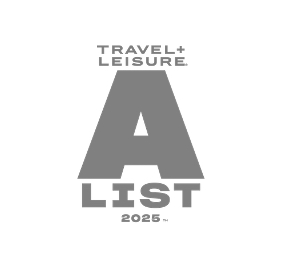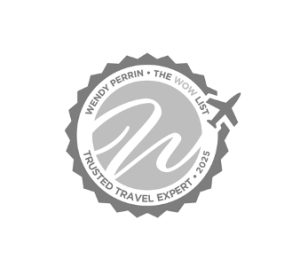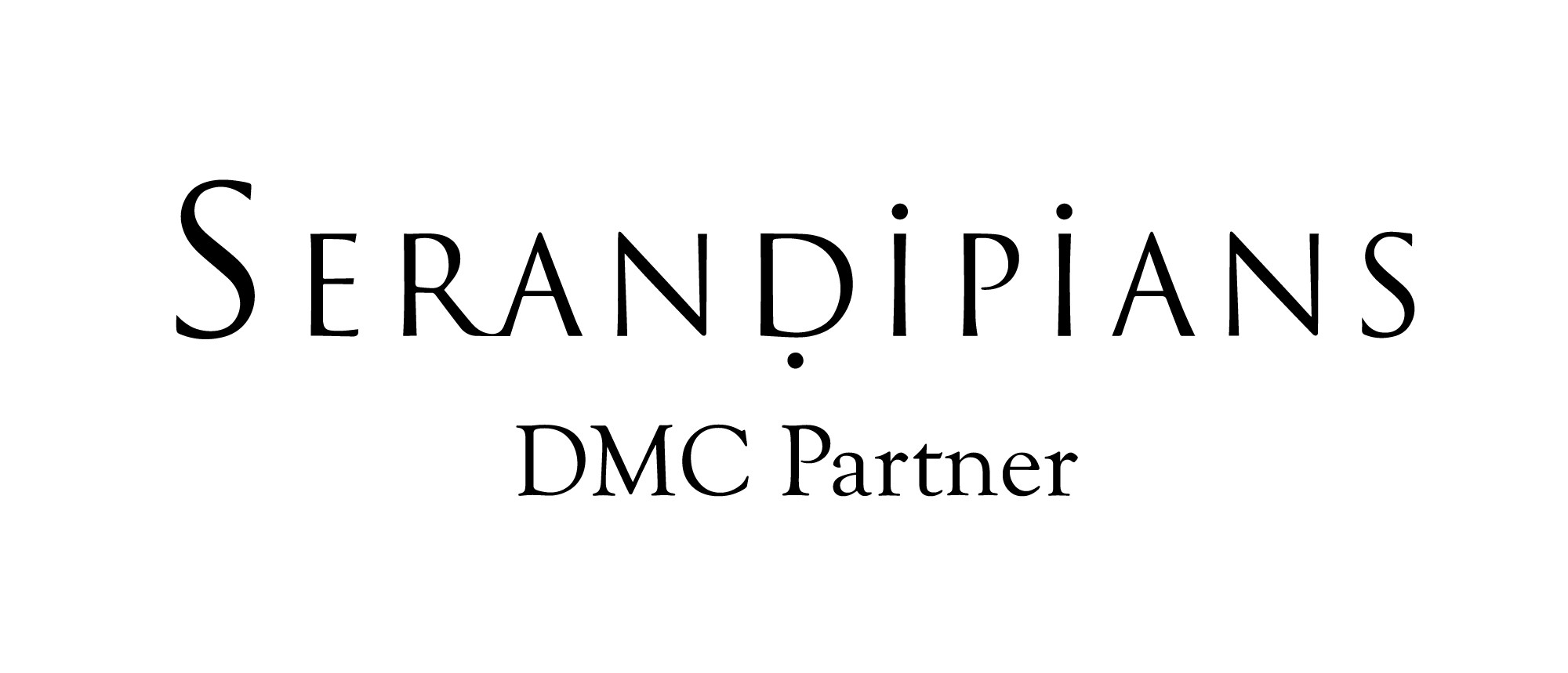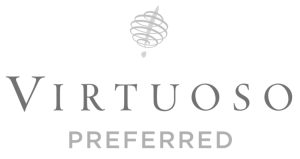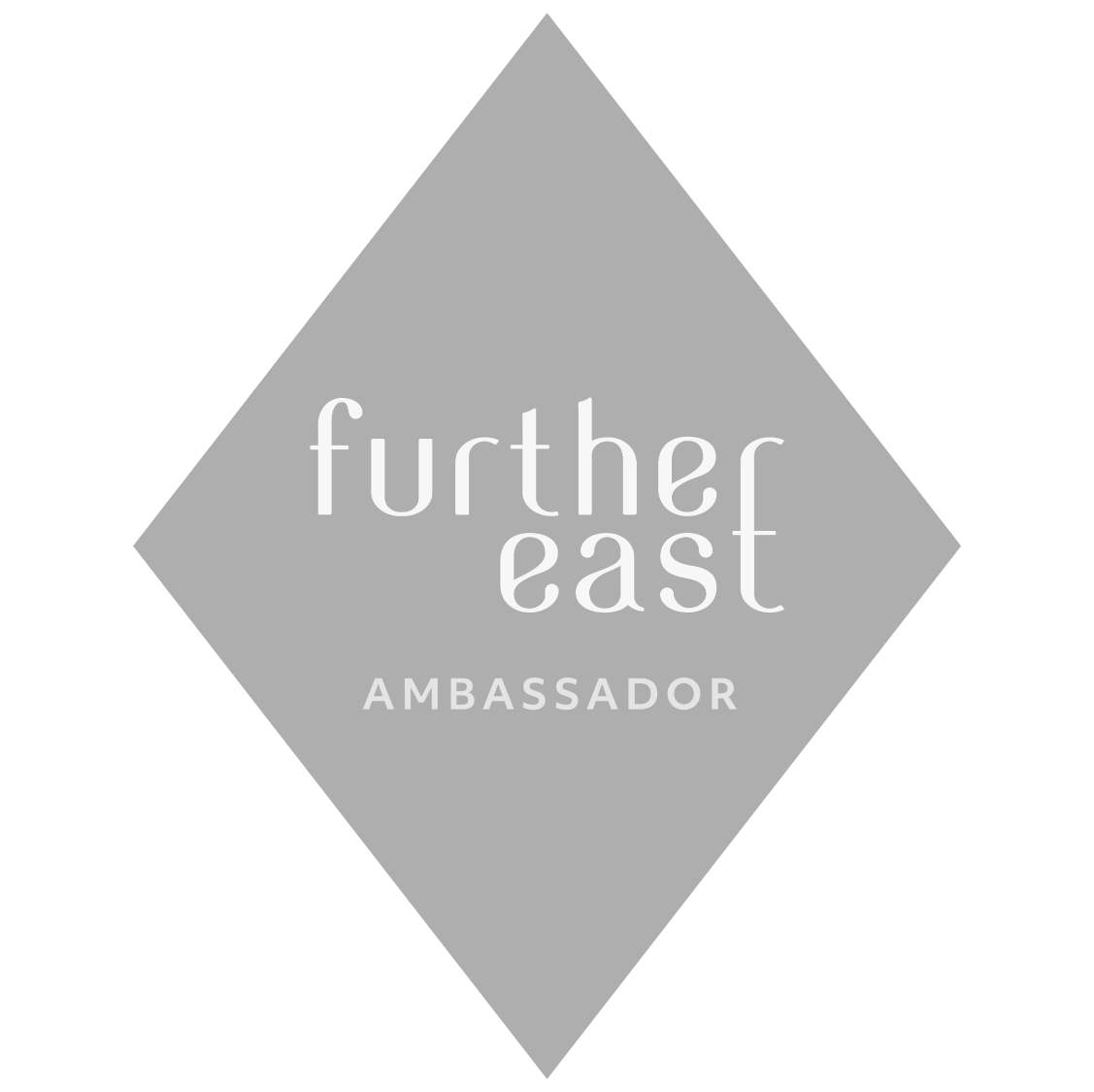New Zealand Travel Information
Things to know before you go
From what to pack (and what you’ll need to leave at home) to how to get around and what to tip, we’ve put together a collection of some of our most frequently asked questions and practical New Zealand travel information.
This section provides essential New Zealand travel information including: climate and currency, time differences and dialling codes, visas and other entry requirements. There’s also information about the nation’s food and drink, flora and fauna, history and culture; but if we have left any of your travel questions unanswered, our locally-based Travel Design teams are here to provide in-the-know and up-to-the-minute advice. Contact us.
New Zealand
Important Information
All travellers, with the exception of New Zealand and Australian passport holders, require either a visitors visa or, if holding a passport from a visa-waiver country (including USA, Canada, UK, European Union countries, Hong Kong, Singapore and some South American nations), will require an Electronic Travel Authority (NZeTA). Visit: www.immigration.govt.nz/new-zealand-visas to ensure you have the correct documentation for travel, or to apply for a visa.
The following items cannot be brought into New Zealand unless specific provision has been made for their exemption – firearms (including sporting firearms) and weapons (unless a permit is obtained from New Zealand Police on arrival at the airport); pirated copyright goods; objectionable (indecent) material contained on mobile/cell phones, computers, film, DVD, printed materials or the like; high-powered magnets, equipment for smoking or taking drugs.
New Zealand is free of many insects and pests, plant diseases and animal infections that are common elsewhere in the world. Substantial fines will be incurred if you arrive carrying animal products including skin, hair, dung, feathers, bone, coral, eggs and sea shells. Some are banned because they can harbour pests and diseases; others because they pose a threat to endangered species. Fresh perishable foodstuffs, such as fruit, vegetables and meat and items manufactured from plant products are also prohibited.
Restrictions apply and/or a permit is required to bring the following to New Zealand: high power laster pointers, goods of Russian origin and certain medicines.
For further information on prohibited and restricted items when entering New Zealand, visit New Zealand Customs Service website.
No liquids, gels or aerosols are permitted beyond the screening area or onboard the aircraft except if they are not more than 3.5oz. (100ml). For purposes of this advice, liquids and gels include beverages, shampoo, suntan lotion, creams, toothpaste, hair gel, perfume and other items of similar consistency. Whilst New Zealand airports no longer requires these liquids to be stored in a clear plastic, please be aware that your airport of origin or connecting airport may still have this requirement. If any of the below items do not fit in the closed/sealed one litre size plastic bag and/or are over 3.5oz. (100mls), they should be packed in your checked luggage: baby formula/milk (to include breast milk) and baby food in containers if a baby or small child is travelling; medications (liquid, gel and/or aerosol) with a name that matches the passenger’s ticket; liquids (to include juice) or gels for diabetic or other medical needs. Quantities are limited to no greater than 3.5 oz. (100ml) per container. Any containers over 100mls will need to be accompanied by a doctor’s note.
All batteries for laptops and other devices must be in your hand luggage. Valuable items such as laptops, cellphones and cameras should be carried in cabin baggage and may be subject to security screenings.
As part of our commitment to looking after Aotearoa New Zealand for future generations, we ask you to join us in taking the Tiaki promise to:
- care for land, sea and nature, treading lightly and leaving no trace
- travel safely, showing care and consideration for all
- respect the culture and local communities, travelling with an open heart and mind.
New Zealand’s spectacularly beautiful landscape includes vast mountain chains, steaming volcanoes, sweeping coastlines, deeply indented fiords and lush rainforests. The country is made up of two main islands, the North Island and the South Island, as well as many smaller islands. Comparable in size and/or shape to Great Britain, Colorado or Japan, New Zealand has only a population of five million, making it one of the world’s least crowded countries. It’s a haven for those seeking peace, rejuvenation and relaxation, as well as a playground for thrill seekers and adventurers.
The majority of the population, nearly four million, live on the North Island, with 1.5 million of those being in the city of Auckland alone. That leaves just one million on the larger South Island. New Zealand’s other two major cities, the capital city of Wellington and the South Island city of Christchurch, both have populations under half a million.
A temperate climate with relatively small seasonal variation makes it an ideal year-round holiday destination. Summers (Dec-Feb) are hot and dry across the entire country. Come winter (Jun-Aug), the South Island boasts many skifields, particularly around Queenstown, yet temperatures in the Far North can still be relatively mild.
In a couple of days’ drive it is possible to see everything from mountain ranges to sandy beaches, lush rainforests, glaciers and fiords and active volcanoes.
New Zealand also retains several overseas territories in the Pacific which officially make up the Realm of New Zealand. This includes Tokelau which New Zealand directly governs, as well as Niue and the Cook Islands which are both self governing, but still a part of New Zealand. Additionally, New Zealand is one of seven nations to officially claim part of Antarctica, an area known as the Ross Dependency.
About 80-100 million years ago, New Zealand drifted away from the supercontinent of Gondwanaland into the South Pacific. This isolation allowed a unique flora and fauna to evolve, with many plants and animals found in New Zealand today being found nowhere else on the planet.
New Zealand completely lacks any ground dwelling mammals, meaning before man arrived, the country was the domain of birds and reptiles. With no predators to worry about, many birds evolved to become flightless, most famously the Kiwi, our national icon. This also led to the downfall of many species such as the Moa which stood up to 3.6 metres tall (12 feet), who were hunted to extinction by Maori after their arrival. Things got much worse after Europeans arrived, bringing with them dogs, cats, stoats and rats, pushing most remaining species to the brink of extinction, or beyond. Today New Zealand has one of the world’s most extensive and successful conservation programs, particularly well known for pioneering island wildlife sanctuaries, many of which you can visit!
New Zealand’s high rainfall and many sunshine hours give the country a lush and diverse flora, with 80 percent of the trees, ferns, and flowering plants being native. From the kauri forests of the far north to the mountain beech forests and alpine tussock of the Southern Alps, you’ll find fascinating plants and trees in every region. You’ll be awed by the majestic evergreen native forests that include Rimu, Totara, many varieties of Beech, and the largest native tree of them all, the giant Kauri. Underneath the trees you’ll find a dense and luxurious undergrowth including countless native shrubs, a variety of ferns, and many mosses and lichens.
The native Maori people of New Zealand are thought to have arrived here on large ocean going canoes called ‘waka’, between 1280 and 1350, making New Zealand the last major landmass on the planet to be settled by man. They dispersed into various tribes or ‘iwi’, defined by which part of the country they lived in.
The first European to sight New Zealand was Dutch explorer Abel Tasman in 1642, although he never landed. Over 100 years later in 1769, Captain James Cook became the next European to visit to New Zealand, successfully circumnavigating and mapping the country aboard the Endeavour. His botanists and other experts gained considerable information about the country’s flora and fauna, as well as the native Maori inhabitants. Cook led two more expeditions to New Zealand in 1773 and 1777, also exploring much of Australia and the Pacific Islands on the way.
After Captain Cook’s exploration, an increasing number of settlers came to New Zealand. The competition for land and resources led to wars breaking out, first between Maori tribes, and then between Maori and the English. In 1840, the Treaty of Waitangi was signed by the British Crown and Maori. It established British law in New Zealand, while at the same time guaranteeing Maori authority over their land and culture (although it did little to stem the loss of Maori land). The treaty is considered New Zealand’s founding document and it’s signing on 06 February is celebrated annually as our national holiday, Waitangi Day.
With the treaty in force, New Zealand quickly went about establishing itself as a nation. Just 14 years later New Zealand became self governing and enacted many forward thinking policies for the time, including allowing women to vote, becoming the first country to do so. The much idolised All Blacks, the national rugby team, also emerged at this time, and are still regarded as the dominant force in the sport today. Perhaps the first real ‘coming of age’ moment for New Zealand occurred in 1915 on a 600 metre scrap of unnamed beach in the Ottoman Empire, where nearly 1000 New Zealand and Australian soldiers were killed on a single day, now commemorated as ANZAC Day, the national day of war remembrance for both nations (25 April).
Thirty years later, the swift collapse of the British Empire in Asia during the Second World War told New Zealand that it could no longer rely on the British for protection, and so the ANZUS Security Treaty was signed with Australia and the United States. This led to another pivotal moment in New Zealand history after the French government defied an International Court of Justice ban on nuclear testing and started testing atomic bombs in New Zealand’s ‘back yard’, the Pacific Islands. The public were enraged and along with Greenpeace, organised a flotilla of boats to occupy the remote atolls being tested on. The government got behind the movement and committed to sending two navy ships as an official protest. But before the flotilla set off, French secret service agents bombed and sank the Greenpeace flagship, the Rainbow Warrior, in Auckland Harbour. New Zealand was incensed by this apparent state sponsored attack, and in an act of sovereignty and self determination, banned all things nuclear from the country and its waters in 1987. The United States threatened to dissolve the ANZUS Treaty as much of its ships and planes were nuclear powered, but so overwhelmingly popular was the ban that the government had no option. The United States then referred to New Zealand as a ‘friend’ rather than ‘ally’ (this was reversed several decades later). The nuclear ban has gone on to be enshrined in New Zealand legislation.
More recently the nation was struck by three tragedies of international significance, the Pike River Mine disaster in which 29 miners were trapped underground and later perished; the 2011 Christchurch earthquake which decimated much of the city and claimed 185 lives; and the Christchurch mosque shootings in which 51 Islamic worshippers were killed. The latter tragedy in particular prompted an outpouring of grief around the world, and an iconic photograph of the then Prime Minister Jacinda Ardern wearing a hajib while embracing victims family members was beamed around the world. This led to dramatic tightening of gun laws in New Zealand, and treaties signed by nations around the world to police the role of social media in terrorism. Ardern was later nominated for the Nobel Peace Prize.
New Zealand’s European colonial history, its relationship with its Pacific Island neighbours, and its geographical location, have given it a diverse mix of ethnicities and cultures. About 70% of the residents are New Zealand European (often referred to as ‘pakeha’, the Maori translation). Maori make up around 16% of the population, followed by Asian at 15%, and Pacific Islanders at 9% (keeping in mind that people can identify as multiple ethnicities). New Zealand has the largest Polynesian population in the world, and Auckland is the largest Polynesian city in the world. The United Kingdom is the largest place of overseas birthplace of New Zealanders, followed by China, India, Australia and South Africa, however many smaller Pacific Island nations such as Samoa, Fiji, and Tonga also make the top ten.
No particular health certificates or vaccinations are required for entry into New Zealand.
Geographic isolation, strict quarantine standards and a high standard of health care contribute to New Zealand being a very healthy country in which to travel. In New Zealand, you cannot sue anyone for compensatory damages if you are injured. Instead the Accident Compensation Corporation (ACC) helps pay for your care, and that means paying towards the cost of your treatment and helping in your recovery while you remain in New Zealand.
In any event, we strongly recommend all travellers take out comprehensive health insurance before departure to cover the duration of their stay in New Zealand because ACC does not cover everything. ACC only covers treatment and rehabilitation in New Zealand, and usually you must pay part of the cost yourself. If you have a serious injury, with long-term effects, you may also be eligible to be assessed for lump-sum compensation once the injury is stable. New Zealand’s public and private medical/hospital facilities provide a high standard of treatment and service but it is important to note these services are charged and personal travel insurance is highly recommended to cover such costs.
Food hygiene standards and water quality are very good and it is safe to eat anywhere and drink tap water without concern.
New Zealand has a very short burn time of 10-15 minutes. Always wear high protection sun screen. Pack a hat, sunglasses and try to minimise your time in the midday sun. You can still be burnt if it is cloudy.
Always observe safety signs and warnings regarding swimming restrictions. Always swim between the yellow and red flags on patrolled surf beaches.
Warmer, northern parts of New Zealand, do have mosquitoes, but they do not carry disease. The local pest, the sandfly, is more common throughout the country. Sandflies, sometimes known overseas as blackflies, are particularly voracious on the South Island around beaches, lakes and forests. Insect
repellent is a must when travelling to the West Coast and Milford Sound. Maori legend has it that visitors to Milford Sound were so entranced by its beauty that they lingered there far too long. A Maori goddess introduced the sandflies to bite the visitors and move them along.
The legal documentation for weddings require that the couple must be in New Zealand for three clear working days prior to the ceremony to obtain a marriage licence. It is a requirement that applicants be over 20 years of age or have parents consent, and if either one has been married previously, dissolution of marriage papers must be produced. People may be married either in a church or in a garden with a marriage celebrant (there is no restriction where the ceremony takes place). The name of the church or other venue and who will be marrying the applicants must appear on the marriage licence. For further details, refer www.bdm.govt.nz
Getting Around
New Zealand law requires that every new building and major reconstruction provide ‘reasonable and adequate’ access for people with disabilities. Most facilities have wheelchair access, but it is wise to check when booking. For further information visit www.enable.co.nz
New Zealand is one of the first places in the world to see the new day, 12 hours ahead of Greenwich Mean Time (GMT). In summer New Zealand uses Daylight Saving Time, with clocks put forward one hour to GMT+13. Daylight saving begins on the last Sunday in September and ends on the first Sunday of the following April, when clocks are put back to GMT+12.
US visitors should also be aware that New Zealanders write the date in day/month/year format.
Hiring a car is a great way to enjoy the flexibility of getting to know a particular region at your own pace. New Zealanders drive on the left hand side of the road (as in the UK and Australia). Drivers give way (or yield) to all traffic crossing or approaching from the right. Speeds and distances are quoted in kilometres.
Due to a number of high profile incidents in recent years, Southern Crossings very strongly recommends against clients driving long distances straight after arriving on longhaul flights.
Most New Zealand roads are sealed and well maintained. However, New Zealand has few highways
between cities and most roads are one lane in each direction. Intermittent passing lanes are found on busier routes.
International visitors can drive in New Zealand using their valid overseas licence. If the licence is not written in English, an International Driving Permit or official English translation must also be carried with the licence when driving. Drivers must carry their licence with them at all times and should be aware that New Zealand strictly controls drink driving, the use of seatbelts and speed limits with random checks and cameras.
We suggest you also check with your local motoring association for reciprocal road side assistance and other touring benefits with New Zealand affiliates.
The minimum rental age ranges between 21 to 25 years depending on the type of vehicle hired.
Metered taxis are available in all major cities and towns. You can book a taxi by phone, by hailing one in the street, or by getting one from a taxi rank. There is a minimum flagfall charge, and then a charge for the distance travelled. Small additional charges are made for luggage, telephone reservations and where applicable tolls, otherwise the amount payable is shown on the meter. Therefore, prices are not negotiated in advance.
Rideshare apps are increasingly popular. Uber is the major player, as well as local option Zoomy. These options are only available in larger New Zealand towns, and typically would not be available for intercity travel. Most have designated pick up and drop off locations at airports which are signposted.
Whilst New Zealand is a small country, the distances between some locations, particularly in the South Island, can be deceptive. For example the drive between Auckland to Wellington is approximately nine hours by car, yet is one hour by air. To drive between Christchurch and Queenstown would take seven hours, or 50 minutes by air.
For maps and further information on distances between attractions visit www.aatravel.co.nz (Time and Distance calculator).
Temperatures are pleasantly warm in summer, often reaching 30°C+. The warmest months are December, January, February and March (average maximum temperatures ranges between 20–25°C (68°–77°F). and the coldest are June, July and August with average maximum day temperature ranging between 10–12°C (around 50°F) in the south and 15–17°C in the north (around 60°F).
Most areas of the North and South Islands have between 2000 and 2400 hours of sunshine a year. There is no rainy season; rainfall is distributed evenly throughout the year. Much of the North Island has a Mediterranean climate and the South Island has hot summers and cool winters.
New Zealand’s National Meteorology Service (www.metservice.co.nz) provides information on current weather conditions and general climate information specific to each part of the country.
In keeping with New Zealand’s relaxed lifestyle, dress is informal on most occasions. Smart casual clothes are acceptable at most restaurants, lodges and nightspots. Men are not expected to wear suits and ties, except in a few of the top formal bars, lodges and restaurants, where a jacket is suggested for evening dining (but not required).
In summer it is usually warm enough to go out in the evenings without a jacket, but a light jacket or jersey should be packed for cooler weather and visits to the high country. You can expect some rain, so include a light waterproof jacket or coat.
Swimsuits, sarongs and beachwear are suggested when visiting in summer, and be sure to bring plenty of sunscreen. A hat is also good for protection against the sun. Sunglasses for sun reflection.
‘Layers’ is the main thing to remember when packing your clothes. The weather can change from sunny and hot to cool all within one day. Bring casual clothes that can be layered. T-shirts, sweater shirt and a sweater. Whether you are travelling in the summer or winter, you can never predict the weather in this semi tropical South Pacific country. Good walking shoes are advisable for outdoor excursions.
Please note that there may be luggage restrictions on some return regional flights (for example Auckland to Waiheke or Great Barrier Island; Invercargill to Stewart Island), visitors are therefore advised to bring a small bag to be able to transport some of their luggage for this part of their holiday. Storage facilities are available for excess luggage.
Spending
New Zealand’s unit of currency is the New Zealand Dollar (NZD$), and is the only currency accepted in New Zealand. Coins have values of 10, 20 and 50 cents, and 1 and 2 dollars. Notes have values of 5, 10, 20, 50 and 100 dollars.
New Zealand is about as close to a cashless society as you can get. Most people pay by debit or credit card, even if the charge is only a few dollars, and cards are accepted almost everywhere. However, smaller shops such as dairies (convenience stores) may not accept credit cards, or will have a minimum spend to accept one. ATM’s are found widely throughout the country.
Any card connected to the international banking network (Cirrus, Maestro, Plus and Eurocard) should work with your regular PIN. Visa and Mastercard are accepted almost everywhere, and American Express in most places, whilst Diners Club is not widely accepted.
Foreign currency and travellers cheques can be exchanged at banks, travel exchanges and hotels in the major centres. Banks in New Zealand are open Monday to Friday, 9.30am to 4.30pm, and are normally closed at weekends. Check www.iccfx.com or your local bank for current exchange rates.
Amounts of NZ$10,000 or more (or foreign currency equivalent) must be declared on arrival and departure.
Tipping is not customary or expected. Hotels and restaurants do not add a service charge to their bills. Tipping is entirely discretionary in appreciation of good service. Employees do not depend on gratuities for their income nor are service charges routinely added to accounts by hotels and restaurants; however a tip of up to 10% in recognition of excellent service is much appreciated. You should not feel obliged to tip tour guides or concierge, it is however appropriate where service has been exceptional. Taxi drivers and hotel porters also appreciate a small change tip for their services.
It is important to note that all incomes in New Zealand are subject to minimum wage requirements set by the government and therefore no employees are reliant on tips to supplement their income.
New Zealand’s ‘Pacific Rim’ cuisine style takes its inspiration from regions and countries such as Europe, Thailand, Malaysia, Indonesia, Polynesia, Japan and Vietnam. This unique blend of influences has created a mouth- watering range of flavours and food available from cafes and restaurants nationwide.
For dishes that have a distinctly New Zealand style look out for lamb, pork, venison, salmon, crayfish, Bluff oysters, paua (abalone), mussels, scallops, whitebait, kumara (sweet potato), kiwifruit, tamarillo and fejoia. Pavlova, our national dessert, is made from meringue and lashings of fresh whipped cream topped with fresh fruit or berries.
While the main centres support a few elegant, silver-service restaurants, the trend is towards more relaxed café/bar dining. There is a wide variety of international food available including Japanese, Indian, Halal, Italian, Mexican, Chinese, Malaysian, and Thai. Kosher food is not widely found. Vegetarian or vegan options can easily be found in most restaurants. Some local favourites to try when in need of a snack include Whittaker’s chocolate, Pineapple Lumps (confectionary), L&P soft drink, hokey pokey ice cream, manuka honey, cheese rolls and meat pies.
While you are here, take the opportunity to discover more about New Zealand wines. Our white wines, particularly Chardonnay and Sauvignon Blanc, have achieved an international reputation for excellence, whilst the reds (in particular Pinot Noir) are also gaining recognition. Craft beer and breweries are surging in popularity in New Zealand, particularly in Wellington and Nelson. There is also a number of high end distilleries producing vodka, gin and whisky.
Minimum hours for shops and businesses are 10:00am to 5:00pm, Monday to Friday. Many stores also open Saturdays and Sundays, with some having a late opening one night a week, usually Thursday or Friday. In resort locations most stores are open to the early evening, e.g. 7:00pm. Some supermarkets and petrol stations are open 24/7. Almost all shops are closed on Christmas Day, Boxing Day, New Years Day and Easter Good Friday.
New Zealand offers a huge variety of shopping from arts and craft markets, galleries and museum shops to exclusive designer stores. For traditional New Zealand souvenirs look for examples of superb Maori carvings in wood, bone and pounamu (greenstone or jade). Also available are jewellery and ornaments made from the iridescent paua shell (abalone), treasured by Maori for centuries. At souvenir stores, do check to make sure the goods are actually made in New Zealand (particularly greenstone).
New Zealand artisans are recognised as among the world’s finest, with works available in stone, wood, glass and metal. The country’s vast wool industry makes it possible to find wonderful handknitted wool sweaters, beautiful wall hangings, homespun yarns and top-quality sheepskins. New Zealand artists are earning an enviable reputation abroad and there are a number of galleries displaying for sale a wide range of work. These are able to be purchased and freight will be arranged to your country of origin.
Alongside top international fashion in boutique stores in the main city areas, you will also find New Zealand’s own award-winning fashion labels, including Zambesi, NomD, Karen Walker, Trelise Cooper, Huffer and World.
All goods and services are subject to a 15 percent Goods and Services Tax (GST) included in the displayed price. Visitors are not able to claim this tax back, however when a supplier ships a major purchase to a visitor’s home address (e.g. artwork) an exception from GST can be applied for.
Communication
The country dialling code for New Zealand is +64. The outgoing international code is 00.
Spark and One NZ are the two main mobile (cell) phone operators in New Zealand supporting a range of technology enabling many overseas mobiles to operate in New Zealand. Visitors should check with their local provider and activate international roaming before leaving home. Alternatively, mobile phones with a local SIM can be hired by the day at most major airports; and prepaid SIM cards are also available for purchase. Coverage is generally good around the major population centres, however some remote locations do not have mobile coverage.
Ambulance, fire brigade or police can be called free of charge from any phone by dialling ‘111’.
Free WiFi is available in many public spaces and airports throughout the country. Some businesses such as restaurants, cafes and bars will provide their WiFi passwords on request.
WiFi is available at all hotels and lodges, however, at some there may be a charge for this service.
About New Zealand
New Zealand has a number of public holidays, particularly in the summer. In addition to the below, each region has its own anniversary day which is a holiday in that region only.
01 January – New Years Day.
02 January – Day After New Years Day.
06 February – Waitangi Day.
March/April – Good Friday and Easter Monday.
25 April – Anzac Day.
First Monday in June – King’s Birthday.
June/July – Matariki.
Fourth Monday in October – Labour Day.
25 December – Christmas Day.
26 December – Boxing Day.
The New Zealand school year is divided into four terms and school holiday dates vary each year. For information on school holiday dates visit www.minedu.govt.nz
Electricity is supplied throughout New Zealand at 230/240 volts, 50 hertz. Most accommodation provide 110 volt ac sockets (rated at 20 watts) for electric razors only.
New Zealand uses Type I electrical plugs, which have three flat pins arranged in an inverted ‘V’ (two angled, one straight down). For all other equipment, an adapter/converter is necessary, unless the item has a multi-voltage option. Please note that power outlets only accept flat two or three pin plugs, depending on whether an earth connection is fitted. Adapters/converters are often available at hotels and lodges, or for purchase locally.
If travelling with hair straighteners, curling irons and hair dryers, please check your appliance to see if it has a built in converter otherwise you may need a voltage converter so it changes the frequency.
Most international flights arrive into and depart from Auckland International Airport, by far the largest in the country. There are also limited flights from North America, Asia, Australia and the Pacific Islands to Christchurch International Airport, and flights from Australia to Queenstown, Wellington and Dunedin airports. There are direct flights from most major North American, Asian and Australian cities, as well as limited destinations in the Middle East and South America. Auckland is also the main international hub for Pacific Island nations.
New Zealand has one main airline, Air New Zealand, which provides the majority of domestic flights within New Zealand. It is rated one of the safest airlines in the world. All domestic destinations can be reached from Auckland, Christchurch or Wellington. The low cost carrier, Jetstar, also provides competing service, but only between the major cities. Several smaller airlines such as Air Chathams and Soundsair provide services to small towns not serviced by Air New Zealand. The longest flight within New Zealand is just under two hours, and thus the only class of travel on all domestic flights is economy. Generally, tea, coffee and water are provided on Air New Zealand flights.
There are only three passenger rail routes remaining in New Zealand, the Northern Explorer between Auckland and Wellington, the Coastal Pacific between Christchurch and Picton, and the famous TranzAlpine between Christchurch and Greymouth. These services now cater mostly to tourists rather than New Zealanders travelling between cities. The TranzAlpine is the only year round service, with the other two operating mostly in summer. There is only one class of travel on all services.
The above train services are complimented by the InterIslander ferry which sails several times a day between Wellington and Picton, linking the North and South Islands. The journey is scenic, particularly when travelling through the Marlborough Sounds. The ferries do transport cars, however rental cars are forbidden due to insurance purposes. There are depots at both ports to facilitate easy exchange.
Buses run regularly throughout the country, however journeys are slow. All bus services are directed towards cost conscious travellers.
New Zealand has three official languages, English, Maori, and New Zealand Sign Language. English is the dominant language throughout the country and all signage is in English, often with Maori accompanying it. Maori did not have a written language when they first encountered Europeans, so todays Maori written language is mainly pronounced how it is spelt. The main exceptions are ‘wha’, which is pronounced as an ‘f’, and ‘nga’, which is pronounced as ‘nar’. Macrons are also used, mainly above the letter ‘a’, to indicate lengthening or exaggeration of the vowel. Many Maori words are incorporated into English conversations or text by New Zealanders. New Zealand also has a number of informal phrases unique to the country, which you will almost certainly encounter throughout your travels. Here’s a handy guide to get you through.
Kia ora – Hello (pronounced key-aura).
Haere mai – Welcome.
Haere ra – Goodbye.
Hangi – Traditional method of cooking/feast.
Nga mihi – Greetings.
Kia mihi – Thank you.
Kai – Food.
Whanau – Family.
Wai – Water.
Moana – Ocean.
Morena – Good morning.
Marae – A Maori meeting house.
Pa – A Maori camp or fortress.
Waiata – Song.
Whare – House.
Aroha – Love.
Tapu – Sacred.
Haka – Traditional Maori war dance, now used frequently by New Zealand sports teams.
Sweet as – Great/no problem.
Bach – Holiday home (pronounced batch).
Barbie – Barbeque.
Choice – Great/good/excellent.
Chur – Cheers/thank you.
Dairy – A convenience store.
A feed – A meal.
Jandals – Flip flops.
Knackered – Worn out.
Lollies – Sweets/confectionary.
He’s a ‘hard case’ – He’s funny.
Gutted – Disappointed.
Mate – Friend.
Munted – Broken/destroyed.
She’ll be right – It’ll be ok.
Stoked – Very happy.
Eh/aye – What?
Wee, inserted into phrases such as ‘I’ll do it in a wee bit’ – Little/a short time (I’ll do it in a moment).
Wop wops – The countryside or a remote place/backwater.
Sport is integral to New Zealand culture and most New Zealanders play sport in some form on a weekly basis. Traditionally rugby, cricket and netball have been the most dominant sports, but rugby league, soccer, sailing and basketball are becoming increasingly popular.
The iconic national rugby team, the All Blacks, are New Zealand’s most famous sporting team. They won the Rugby World Cup in 1987, 2011 and 2015. Exactly how the team got their name is open to debate, but due their dominance since the 1900’s, many other national sports teams have named themselves after the team, such as the ‘Tall Blacks’ in basketball, and the ‘Black Sox’ in softball. Women’s teams often have the word ‘Fern’ in their name, thanks to the national netball team being known as the Silver Ferns.
New Zealand has a proud Olympic history and ranks highly in the medals per capita ratio. Rowing, athletics and sailing are the most successful sports. New Zealand also competes in the Commonwealth Games, and has hosted it three times in 1950, 1974 and 1990.
Many visitors wish to see the All Blacks play, however rugby is a winter sport so not played when most people are visiting in summer. However, Super Rugby, a regional tournament with teams from New Zealand, Australia, and the Pacific Islands, can be scheduled as early as February.
New Zealand has a surprisingly large local music scene with many bands becoming household names in New Zealand and Australia, but few making it big internationally. Below are a few favourites for your roadtrip around the country.
NATURES BEST – COMPILATION (2002)
A must for any New Zealand roadtrip, Natures Best is a collection of New Zealand’s top 30 songs as voted by the Australasian Performing Rights Association.
LORDE – PURE HEROINE (2013)
An exception to what’s written above, Lorde gained worldwide fame with this pop album which went number one around the world and earned her two Grammy Awards. The album features the single Royals.
DAVE DOBBYN – OVERNIGHT SUCCESS (1999)
Perhaps New Zealand’s most treasured musician, rocker Dave Dobbyn has had countless hit songs throughout his 40 year career. This album is a ‘Best Of’ compilation. Keep an ear out for Loyal, a song that has become synonymous with New Zealand’s America’s Cup success.
KIRI TE KANAWA – MAORI SONGS (1999)
Dame Kiri Te Kanawa is a well known name in the opera world and is particularly associated with Mozart, Strauss and Puccini.
FAT FREDDY’S DROP – BASED ON A TRUE STORY (2005)
In recent years New Zealand has developed its own reggae scene, and Fat Freddy’s Drop are one of the pioneers. This album garnered international acclaim and is so perfect for a roadtrip, it even has a song named Roadtrip.
HONOURABLE MENTIONS
Bic Runga (pop), Brooke Fraser (pop), Split Enz (rock), Crowded House (rock), The Feelers (rock), The Black Seeds (reggae), Six60 (reggae), Shapeshifter (electronic/dance), Che Fu (hip hop), Kimbra (pop), Hayley Westenra (opera), The Naked and Famous (indie), Broods (pop) and Hollie Smith (soul).
Up until the late 1980’s the film industry in New Zealand was non existent. Then came along Weta Workshop, a special effects and props company used by the makers of Xena: Warrior Princess, and Hercules: The Legendary Journeys. The two TV shows were wildly popular around the world at the time, and launched Weta into the big league, along with a little help from Hollywood director and proud New Zealander, Sir Peter Jackson. Since then Weta has gone on to produce dozens of blockbuster films including King Kong, X-Men, Planet of the Apes, Avatar, The Chronicles of Narnia, and most famously, the Lord of the Rings and Hobbit trilogies. New Zealand’s spectacular scenery is the main drawcard of course, as well its highly trained workforce and relatively low wages (due to exchange rates). Sir Peter Jackson and the team at Weta Workshop have won so many Oscar’s that they can be seen throughout the Weta premises in Wellington.
Here’s a few of our favourite locally produced movies, as well as the best blockbusters to see before you arrive…
WHALE RIDER (2002)
A moving story about a young Maori girl whose ambition it is to become the chief of her tribe, a roll reserved for males. This movie provides a great insight into life in a predominantly Maori village in a remote and ruggedly beautiful corner of the country. Based on the novel by Witi Ihiaera.
THE PIANO (1993)
Phenomenally successful, this movie tells a harrowing story of a Scotswoman shipped off to New Zealand in the 1860’s for an arranged marriage, and the drama that unfolds when she falls for another man.
THE LORD OF THE RINGS (2001-2003)
Scenery, scenery, scenery! Filmed in every corner of the country, this trio of movies showcases the extreme beauty and vast array of landscapes packed into this tiny country. Of course, the epic storyline is one of the world’s most famous books-cum-movie and earned Sir Peter Jackson and Weta Workshop dozens of awards. Later followed by another trilogy, The Hobbit.
BOY (2010)
An endearing film about young boy who worships two individuals in life, his father, and Michael Jackson. When the father comes home from jail, Boy and his airy younger brother get to reconnect.
THE WORLD’S FASTEST INDIAN (2005)
This movie tells to true story of lovable Burt Murno (portrayed by Anthony Hopkins), an unassuming Kiwi who travelled to the US in the 1950’s and 1960’s with his homemade motorbike and set the world speed record which still stands today.
RIVER QUEEN (2005)
Set during the New Zealand Wars between Maori and English, this film follows a young Irishwoman in her search for her Maori child who was kidnapped by his tribe. An insight on how Maori lived before modern day society, and their grievances on losing their land.
BOMBSHELL (2016)
One of the most pivotal and controversial moments in New Zealand history (as told in the above History section ), this movie follows the New Zealand Police as they work to expose the truth behind the bombing of the Rainbow Warrior, and the capture of the French secret service agents that orchestrated it. Part of an excellent series of made for TV films about notable events in New Zealand’s history, available on www.tvnz.co.nz.
CHASING GREAT (2016)
With unprecedented access behind the scenes of the All Blacks, and following a notoriously reserved protagonist, this documentary follows Richie McCaw in his last year with the All Blacks as he works to cement his legacy as the world’s greatest rugby player by winning the 2015 Rugby World Cup.
SIONE’S WEDDING (2006)
Four mischievous Samoan lads are banned from their best friend’s wedding, unless they can prove themselves mature and sensible by finding, and keeping, girlfriends of their own. A hilarious look at Pacific Island culture in New Zealand.
Tiaki means to care for people and place.
We are incredibly lucky to call this small group of islands our home, and equally as proud to have you visit and enjoy. As responsible hosts, we have some tips on how you can explore the country safely, while also preserving it for us, our children, and the travellers who follow you.
PROTECT NATURE
Our spectacular landscapes are the first and foremost reason for most travellers visiting our shores, and much of our unique wildlife cannot be found anywhere else in the world.
The best way to get up close to our wildlife is with our trained guides who have concessions and expertise. When not with a guide, please keep at least 20 metres away from any wildlife you encounter. Do not feed wildlife, particularly our rare native birds whose tameness has become their downfall. Be especially vigilant around our parrots, who are all too happy to snatch food, cameras and passports that aren’t tied down! Some marine animals, particularly dolphins and whales with calves, are protected by strict government regulations and fines can be issued if you get too close.
When hiking, please always wash and scrub your boots at the end of each day, especially in the northern parts of the North Island. The Kauri Dieback is a disease that doesn’t affect humans, but easily kills kauri trees and is spreading quickly through our forests, transmitted by hikers boots. Many forests have had to close to visitors to stop the transmission of the disease. Also when hiking, remember that there are few rubbish bins along the way, so you will have to carry any rubbish home with you. Similarly, plan your toilet stops around your hikes. Fines are possible for all infringements.
SHOW RESPECT
Our indigenous Maori people have a rich and unique culture which should be experienced at some stage during your visit. Maori people are completely integrated into everyday New Zealand society, and you will likely meet many along the way without realising it. Most of your experiences will include a Maori component, and you are encouraged to ask any questions you may have.
There are no ‘native reserves’, however some Maori owned land and buildings are considered ‘taonga’ (treasures), and therefore off limits to visitors. This is always clearly signposted.
When meeting Maori people, particularly elders, there are just a couple of basic guidelines to be aware of. Unless invited, do not touch a Maori person’s head, this can make them uncomfortable. Sit only on chairs, not tables, and do not stand on either tables or chairs. Food is considered sacred and therefore food preparation and serving areas should be treated with respect. Finally, always ask permission to take a photo of someone, no matter their race.
DRIVE CAREFULLY
Please refer to the above Driving section for more information on New Zealand’s road rules. Most importantly, do not drive after a longhaul flight, stick to the left hand side of the road, and frequently pull over for any traffic queued up behind you.
New Zealand has produced several fine writers of international acclaim, and two have gone on to win the Booker Prize.
THE LUMINARIES – ELEANOR CATTON
Winner of the 2013 Booker Prize, The Luminaries is a wonderfully written mystery novel set in the town of Hokitika during the gold rush in 1866, A new prospector travels to the town to try to make his fortune, but instead stumbles into a tense meeting between twelve local men, and is drawn into a complex mystery that is covering up a series of unsolved crimes. Make sure you start this book in plenty of time, it’s a whopping 832 pages long.
THE PENGUIN HISTORY OF NEW ZEALAND –
MICHAEL KING
An extensive and educational read of New Zealand’s history from pre Maori times to the current day.
AN ANGEL AT MY TABLE – JANET FRAME
Janet Frame is perhaps the most famous writer ever to have been produced by New Zealand. As her fame grew, readers became curious to know more about her private life. Her reluctance to make public appearances led to a perception of her as a recluse. Exasperation at some of the ‘myths’ she heard about herself led her to write a celebrated autobiographical trilogy, An Angel at my Table being the second.
KARORI – KATHERINE MANSFIELD
Iconic Katherine Mansfield’s wrote four short stories, At The Bay, The Doll’s House, The Garden Party and Prelude, about her formative years in New Zealand, the latter of which she was encouraged to write by Virginia Wolf. Although never realised, her intention was that they would come together to form a novel named Karori.
HAIRY MACLARY FROM DONALDSON’S DAIRY – LYNLEY DODD
An iconic New Zealand children’s book about a group of dogs led by Hairy Maclary who set off on an unescorted outing to the park, only to be scared away one by one by local bully and tomcat, Scarface Claw.
I could never have done it without Alexandra's help and guidance!
She made me look like a total rock star."
I highly, highly recommend having them plan your trip to New Zealand!"
Would we go back? You bet! Would we use Stuart’s team? Of course!"
If you want a first class trip to New Zealand, I wouldn’t use anyone else!"
It was an awe-inspiring once-in-a-lifetime trip curated magnificently by Sarah and Sara.
I will be forever grateful for their kind and thoughtful advice and support."
From premier rooms, to chefs table seatings at restaurants, to champagne greetings and surprise turn-in treats,
we felt like we were VIPs the entire trip…It was truly a unique and unparalleled trip for us"
it really was the perfect trip… We couldn’t have been more pleased."
You are absolutely magnificent!
exceeded our expectations."
many many many thanks!!!!!!"
Planning a 7 week trip is daunting enough without the complications of COVID cancellations, rebookings, and closures. Yet every connection, every transportation detail, every accommodation, every meal, everything was flawless ... the best guides, our accommodations and the excellent itinerary and pacing, made for a perfect trip.
We can't thank Southern Crossings enough for making this trip all, and more, than we had imagined. You allowed us to see the best of your countries: the people, the beauty, the culture. Five stars, a blue ribbon, and a gold medal to everyone at Southern Crossings!"



